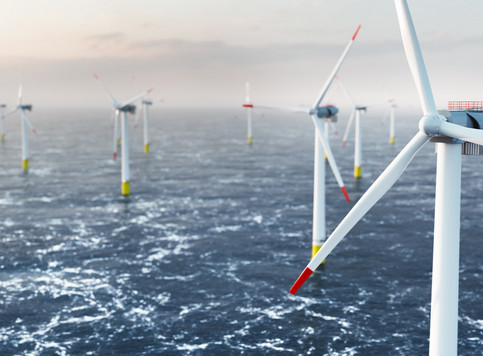NVE recommends that solar power plants of up to a 5 MW limit do not need a license under the Energy Act
The Norwegian Water and Energy Directorate (NVE) has been given a mandate (in 5 parts) from the Norwegian Ministry of Energy (ME) 10 July 2023 in order to assess how to reach the overall aim of 8 TWh solar power within 2030. On 5 February 2024 NVE’s report related to the assignment was published.
The 8 TWh aim may be achieved through installations on the roofs and facades of residential and commercial buildings. 2030 is only 6 years away, and current shortage of available grid capacity plus potential risk of land conflicts must be considered when constructing ground-mounted solar power parks.
Greater predictability for solar developers
Today, a license is required under the Energy Act if a solar power plant triggers the need to establish a new high-voltage power line. Following an assessment of considerations for the power system, the environment and society, NVE recommends implementing a new license limit of 5 MW for solar power plants (assuming that extended connection for power generation up to and including 22 kV is introduced).
NVE believes that the license obligation for solar power plants should be linked to the plant's installed capacity. As a result of this, the largest plants will continue to be handled by NVE and the smallest will be handled by the relevant municipality.
Current situation and period until 2030
Per date Norway has approx. 600 MW of solar power (production of 0.45 TWh). To reach the aim of 8 TWh for Norway, solar power plants with an installed capacity equivalent to approximately 10,000 MW must be developed and constructed. The current regulatory framework must be amended to meet such future need (cf. among others the “solar package” the Parliament has instructed the Government to prepare H1 2024, and to commercialize the solar industry strong economic incentives/instruments should be introduced.
NVE's analysis indicates that increased solar power production may lead to reduced power prices in the spring, when the demand for power production can be high. Naturally, solar power plants produce more in the summer/autumn half year, and not in the winter-time when Norway’s demand for electricity capacity is at its highest. There will be a need to further assess any negative consequences of operational challenges, and actions/regulatory amendments to minimize such consequences.
See the publication on NVE’s web page here (only in Norwegian).
The mandate can be read in full here (only in Norwegian).



